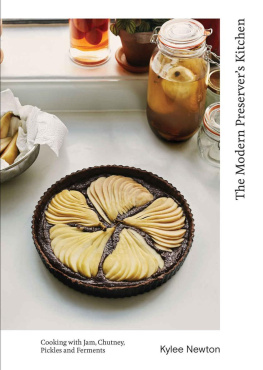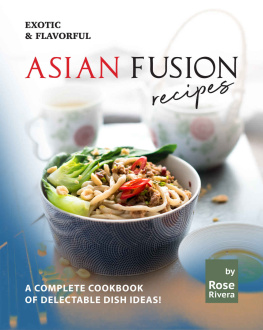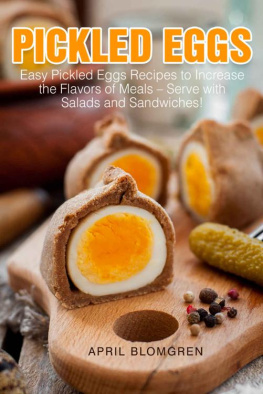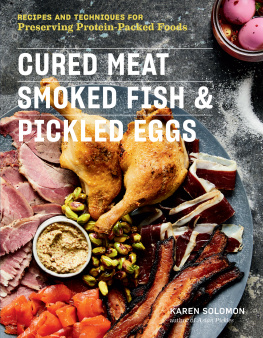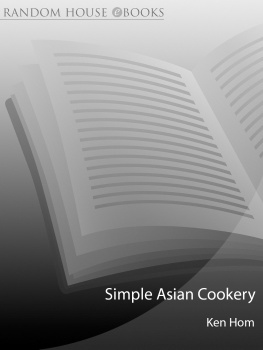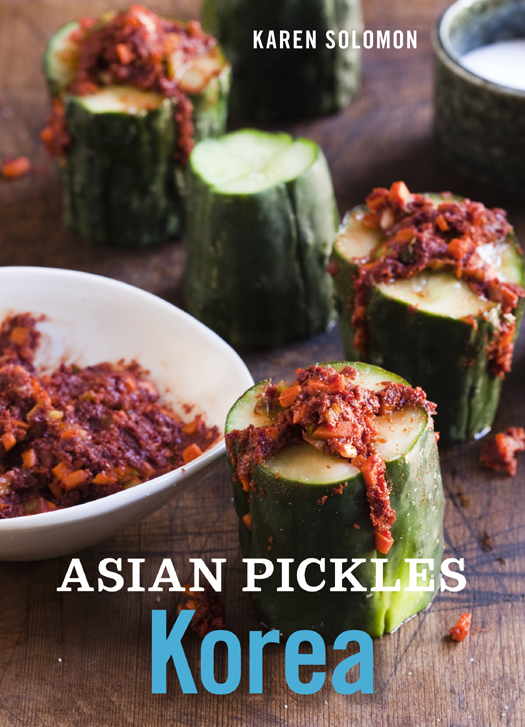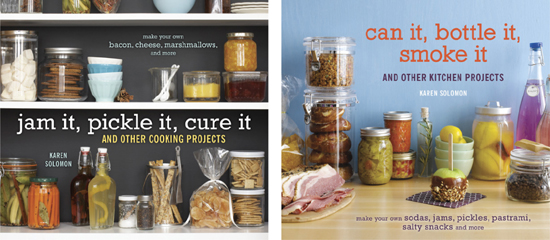2013 Ten Speed Press Ebook Original
Copyright 2013 by Karen Solomon
Photographs copyright 2013 by Jennifer Martin
All rights reserved.
Published in the United States by Ten Speed Press, an imprint of the Crown Publishing Group, a division of Random House, Inc., New York.
www.crownpublishing.com
www.tenspeed.com
Ten Speed Press and the Ten Speed Press colophon are registered trademarks of Random House, Inc.
eBook ISBN: 9781607744795
Food styling by Karen Shinto
Prop styling by Christine Wolheim
v3.1
Other Cookbooks by Karen Solomon
Jam It, Pickle It, Cure It: And Other Cooking Projects
Can It, Bottle It, Smoke It: And Other Kitchen Projects
EBOOKS IN THIS SERIES
Asian Pickles: Japan
Asian Pickles: China (July, 2013)
Asian Pickles: India (November, 2013)
FORTHCOMING PRINT BOOK IN THIS SERIES
Asian Pickles: Japan, Korea, China, India, and Beyond (March, 2014)
VISIT WWW.KSOLOMON.COM
Introduction
The explosion of Korean food is no surprise for those enchanted with its fire, its assertive personality, and its surprising ability to give a bold boost to old standards (kimchi taco/hot dog/pancake/snack cake, anyone?). One premise must be declared before you and I can move forward: Korean pickles are the bomb.
My love story with kimchi has a familiar backdrop: the dingy, barbecue smokefilled, no-frills dining rooms of the San Francisco Bay Areas best Korean eateries. Sure, I initially came in for the well-marinated, flame-grilled bulgogi; hot, steaming bowls of kimchi jigae; and the sizzling and addictive stir-it-yourself dolsot bibimbap. But it was the variety of banchanthe copious small side dishes, including kimchi, that complement a Korean mealthat kept me coming back. As a longtime lover of condiments and pickles, I dived headfirst into cabbage kimchi and daikon radish kimchi, and went cuckoo for bits of savory dried daikon, sesame spinach, sweet shredded radish and carrots, and various salted greens. My chopsticks would linger over each offering like fingers twirling above a box of chocolateshmmm what should I taste next? To my joy, almost every one I tried was a flavor explosion.
But lets not get ahead of ourselves.
When it comes to Korean pickles, napa cabbage kimchi is the avatar of all things Korean and vegetable (for this, jump right ahead to the recipe for properties, and other virtuesis a frequent subject of conversation in Korea and, increasingly, beyond. For me, it just makes rice come alive, and eating some foods without itsuch as fried rice, noodles, or beef tacosfeels like some sort of undue punishment.
Like the term pickle itself, kimchi is nearly impossible to define succinctly. (That said, there was a famous legal battle against Japanese kimchi producers in which the UN Food and Agriculture Organizations Codex Alimentariusthe same folks who label regionally-specific food products like Champagne and Parmesan cheeseproclaimed that only Korean-made kimchi products were authentic.) There are countless varieties of kimchi. Often it is hot; sometimes notsome kimchi are cooling, with only a mild hint of garlic and ginger, while others pack a pungent wallop. Often it is all vegetable, but dried fish, anchovies, oysters, shrimp, , and beef broth are frequently invited to the party. It tends to be fermented, but some kimchi are meant to be eaten fresh. Like art, kimchi may elude definition, but we kimchi addicts know it when we see it.
And kimchi styles are quite literally all over the (Korean) map. Generally, northern kimchi styles have less salt and seasoning and more water, and as the kimchi trail travels south, the pickles become hotter, thicker, and packed with more strong flavors. Much of what Americans have come to think of as kimchi seems to reflect the more potent and prevalent southern styles.
When and How to Serve Kimchi and Banchan
Meals in Korea could be modeled on my dreams: pickles and tasty, salty side dishes morning, noon, and night. Banchan are the array of tiny dishes traditionally served at the Korean table; they almost invariably include kimchi. A typical Korean meal consists of a rice bowl and a soup bowl for each person, and communal dishes such as noodles or stew. Dishes of banchan to be shared are placed in the center of the table, with diners serving themselves bites as they eat. Banchan are meant to refresh and cleanse the palatehence the tendency toward big, bold flavorsand they also add a healthy dose of vegetables and meat to the meal.
, also bring in the familiar Asian pickling flavors of vinegar and soy sauce. A proper Korean banchan array may also offer stir-fried, steamed, or boiled food. I have included here recipes that sample a range of banchan because, even when they are not pickled, fermented, or brined, banchan all play the role of pickles in Korean cuisinesmall bites eaten alongside the main meal to recharge the taste buds.
One of the best things about banchan is their capacity to surprise. Offerings vary from eatery to eatery and from home to home. But they can vary also from day to day and from season to season. A diner is never sure how many there are going to betraditionally, there will be three, five, seven, or nine, or, for very formal meals, twelve. The colors, the textures, the temperaturesin the hands of a masterful chefall are meant to work together.
For the home cook, enjoying a variety of banchan means stocking the fridge with a few jars of long-lasting pickles and kimchi, and sometimes preparing a few fresh banchan to breathe new life into a simple meal. But dont sweat the numbersany one of these recipes puts bite and soul into a humble plate of rice or noodles, meat or soup, tofu or vegetables. So pick one or two or go overboard with morewhen you have banchan, you have all of the components to make a simple meal more complex and satisfying.
Introducing banchan into your eating is a ticket to ride for both flavor and texture. Its a journey I gleefully embark upon every chance I get. Join me, wont you? Lets start with the basics.
Basics of Korean Pickling
Which flavors are the biggest, baddest, and boldest? Youll find them in a Korean pickle. Salt? Lots of itdont even try to get low sodium here. Garlic? By the bulbful. Ginger? Blinding you with its bite. Green onions, fish sauce, soy sauce, sesame oil, and, of course, ground dried chile pepper till the cows come home. In varying amounts, these are the iconic flavors of kimchi and many banchan. But what else sets Korean pickles apart?
1. Lacto-fermentation . Korean pickles get their sparkle and tang because many of them are fermented before being eaten. Even if you have tried at sauerkraut and failed, know that kimchi is quite possibly the easiest fermentation to pull off. Salt, hot peppers, garlic, and ginger are all antimicrobialthey help protect the food from spoilage as it ferments, giving it the best chance to avoid mold and harmful bacteria. Jump-starting a pickle with some fish sauce, a compound that is already fermented, puts your fermentation more assuredly into high gear.


